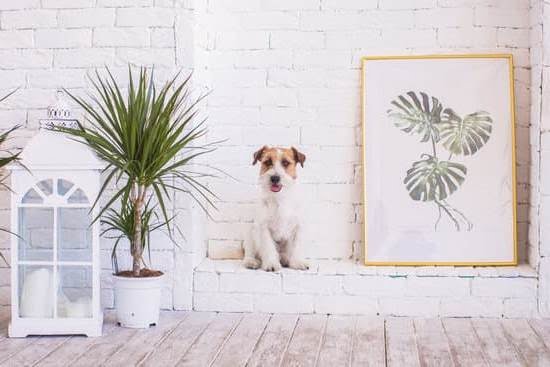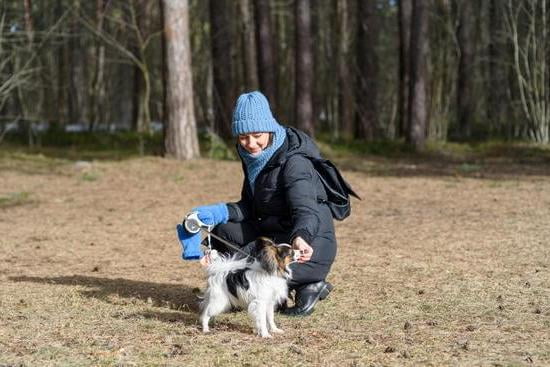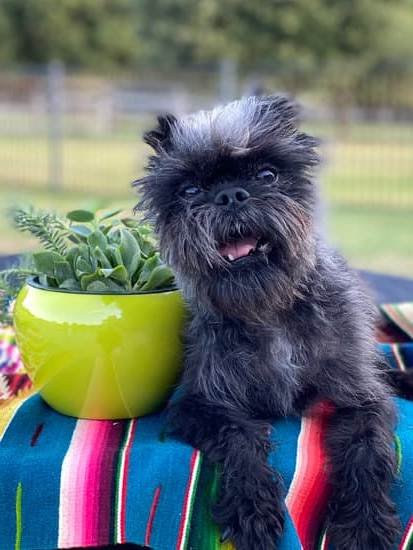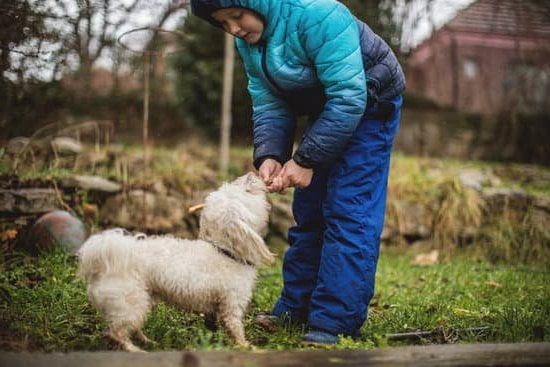Introduction to Separation Anxiety Dog Training
Separation Anxiety Dog Training is a process used to help dogs become comfortable when left home alone. This type of training often reduces the symptoms of separation anxiety and helps a dog to learn calm behaviors that he can rely on when no members of the family are at home. It is important to understand that this training takes time, patience and consistency.
The benefits of Separation Anxiety Dog Training include improved behavior, less stress and worry for the dog, reduced barking or destructive behavior, increased confidence and self-reliance in the canine companion, as well as decreased stress levels in the owner.
Common causes of separation anxiety often include sudden changes such as a new home environment or changes in routine or schedule. Additionally, fear of being alone can be increased by situations such as sudden illness in the family, moving away from familiar people/places, or exposure to loud noises such as fireworks.
Fortunately, there are many available resources for dog owners looking for help with separation anxiety. Behavior modification techniques are popular methods used to reduce anxious behavior, such as desensitization drills or counterconditioning activities. Depending on severity there may also be other helpful resources like cognitive therapy for animals offered by experienced professionals like certified animal behaviorists or veterinary behaviorists.
Identifying Separation Anxiety in Dogs
Recognizing signs of separation anxiety in dogs isn’t always straightforward. While puppies and younger dogs may display obvious clues such as barking and crying when kept alone, older dogs may express their fear differently. Other signs that your canine companion may be suffering from separation anxiety include:
• Excessive barking and howling: Dogs left alone for too long can start to bark or howl excessively as a way to relieve stress. They may start jumping at the windows or scratching doors, trying desperately to escape the loneliness.
• Accidents indoors: Dogs with separation anxiety are more likely to have accidents when their owner leaves, which is an indication that they’re having difficulty containing themselves while their beloved human is away.
• Destructive behavior: Especially if not confined in a safe area, an anxious dog may become destructive while they wait for their owners to return home. Commonly damaged items around the home include furniture, carpets and curtains – as well as anything valuable that belongs to the owner such as shoes or clothing.
Separation anxiety can be managed effectively with training, routine and behavior modification techniques such as desensitization (exposing them to a controlled version of what triggers their fear) and counter-conditioning (associating something positive with the act of being left alone). Rewards based conditioning can also be effective in encouraging positive behaviors from distressful situations. If these methods do not provide sufficient relief from symptoms it is recommended seeking advice from a certified professional animal behaviorist.
What to Avoid When Training Separation Anxiety
Potential risks – One of the biggest potential risks when training a dog with separation anxiety is inadvertently reinforcing the behavior by providing attention (positive or negative). Attention, either verbal or physical, might include petting, scolding, calling out their name, or even eye contact. All forms of attention can give your dog the impression that they are being rewarded for exhibiting anxious behaviors such as barking and chewing. Another risk is failing to understand the severity of a dog’s anxiety. It’s important to take steps to mitigate stress from the onset and avoid escalations in intensity that can make it more difficult for you and your dog to address in the future.
Mistakes to Avoid – Some common mistakes to avoid include abruptly leaving without a plan in place; not preparing the environment prior to departure; staying too long upon arrival home; not providing adequate exercise, mental stimulation, and companionship; abrupt changes in routine; remaining overly focused on controlling behaviors instead of reducing distress levels; not training basic commands first; offering ‘compensation’ after returning home such as treats or toys; becoming emotionally reactionary towards anxious behavior such as getting angry or very strict with scolding/discipline.
Helpful Tips – To manage separation anxiety effectively during training it is best practice to have a plan in place prior to leaving that includes emphasizing self-control and problem solving rather than relying on rewards or punishments post-returning home. As part of your plan focus on obtaining basic obedience commands such as sit/stay/leave-it which will help increase focus and offer an alternative cue towards self-calming behaviors. Provide consistent structure within their environment with regular feeding times, walks, playtime etc., along with crate training provided it is done correctly as directed by an animal behavior consultant if needed. Become consciously aware of any adjustments within routines (school holidays etc) that could trigger an escalation in anxiety levels if not appropriately managed thus prepare beforehand. Finally ensure you allow adequate time for proper goodbyes both before leaving and upon arrival home – delaying but only gradually until successful results arrive – well wishes are just as important for fur babies too!
Methods of Training Separation Anxiety
When training a dog with separation anxiety, it is important to start by building the dog’s self-confidence and security. This can be done through methods like positive reinforcement and treats during training sessions. It’s also important to reward calm behavior immediately whenever the dog shows signs of being relaxed.
Next, provide your pet with plenty of exercise both mentally and physically so that they are physically and emotionally drained before having to be left alone. When you go to leave, give your pet a special chew toy or bone that will occupy their time while you’re away. This acts as a stress reliever while they wait for you to return.
When first starting out, it is beneficial to gradually increase the time spent away from your pet in short increments until you are able to leave for a set amount of time without your pet getting anxious. Also, it is important to create a distraction-free environment before leaving your dog alone in an effort to keep them focused on the task at hand instead of dwelling on your departure. Additionally, if one method isn’t working incorporate other techniques such as classical conditioning and some fear reducing techniques like desensitization exercises which involve exposing the animal slowly to things they may find stressful until they become comfortable with the situation.
At-Home Strategies
Mental Stimulation : To manage separation anxiety while away from home, it can be helpful to give your dog mental stimulation when possible. This could include interactive toys or puzzle feeders that reward your dog for completing activities. Also, consider engaging in an activity such as playing fetch, going for a walk, or teaching a new trick before you leave.
Create a Consistent Environment : It is important to create a consistent environment for your pet to help them recognize and expect when you’re leaving and coming back. You can achieve this by providing routine and structure around the house. Utilize commands such as sit/stay before leaving, and provide clear signals when it’s time to go.
Use Pheromone Sprays : Pheromones are natural chemical substances that animals use to communicate with each other and they can be incredibly effective in calming anxious pets. Pheromone sprays replicate these natural scents which can help comfort dogs who suffer from separation anxiety while their owners are away from the home.
Professional Solutions
When you first experience symptoms of separation anxiety in your dog, it can be difficult to know where to turn. But if left untreated, separation anxiety can escalate and become a more serious problem for both you and your pet. Professional dog trainers are the best people to consult for help when it comes to managing your dog’s severe separation anxiety. A professional trainer may be able to identify possible causes of the behavior such as fear of being alone, lack of regular mental stimulation or boredom.
Once the underlying cause is addressed, professional trainers may offer a wide array of solutions tailored specifically to your pup’s unique anxiety needs. These solutions can include specialized treats that provide distraction or relaxation rewards along with desensitization techniques to get your pup accustomed and comfortable with short periods of time spent apart from his owner. The professional trainer may also recommend changes in diet, exercise routine, and lifestyle patterns in order to manage long-term separation anxiety issues. In some cases, medication such as anti-anxiety medication may be prescribed and monitored by a competent veterinarian as an alternative form of treatment for severe forms of separation anxiety. With the expertise from an experienced professional dog trainer, you’re sure to find lasting relief from even the most extreme cases of canine separation anxiety!
Case Studies
One owner was able to successfully train their separation anxiety dog by utilizing positive reinforcement. Every time the dog would display a calm and collected behavior, even when left alone, the owners would reward the pup with treats, cuddles and praise. After consistently repeating this behavior for several weeks, the pup began to understand that showing calm behavior during separations was a desirable trait. This ultimately reduced their anxiety and helped manage the dog’s behavioral issues in an effective manner.
Another story of successful separation anxiety dog training involved conditioning a puppy through associative learning. The owner placed a favorite toy near an escape route used by the pup before leaving him alone. Whenever they were ready to leave, they’d call out the puppy’s name and point towards the toy, which resulted in them entering into a state of relaxation instead of exhibiting anxious behaviors. After weeks of repetition, the pup had learned to stay on his bed or mat for extended periods of time without any sort of disturbance from distractions like their escape plan or destructive habits when their owners had left them behind. This successful application of associative learning provided instant gratification for both sides since each time left alone it appeared that chaos had been turned into contentment and peace of mind.
Conclusion
Separation anxiety in dogs is a serious issue that can significantly affect the pet’s well-being and overall health. It is important to recognize this issue as early as possible and develop an effective management plan to keep your pet happy and healthy. Dog owners should ensure they are familiar with different dog training techniques, provide plenty of exercise and mental stimulation, build associative relationships with their pet, and seek help from a professional when needed. Training alone will not resolve separation anxiety issues but is an important tool for helping create lasting positive changes in the dog’s behavior. Lastly, be patient while adjusting to new routines; it takes time for puppies and dogs to learn new behaviors. With consistent effort and a compassionate approach, most separation anxiety cases can be successfully managed over time.

Welcome to the blog! I am a professional dog trainer and have been working with dogs for many years. In this blog, I will be discussing various topics related to dog training, including tips, tricks, and advice. I hope you find this information helpful and informative. Thanks for reading!





